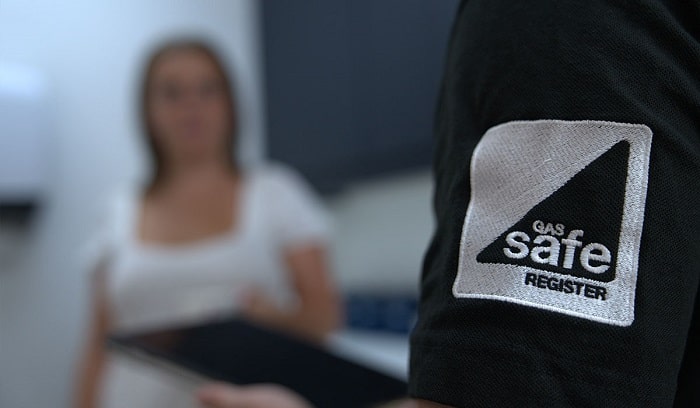
Cooking is a basic necessity for daily living. It has its own set of risks, specifically if using a gas stove. Most of the households use gas stoves as it is a more efficient and quicker way to cook. Thus, it is essential to know how to use them to avoid any hazardous risks. Use of these appliances is reliable and convenient, but improper usage can be the cause of serious risks such as gas leaks, carbon monoxide poisoning, and even accidental fires.
Many accidents take place in kitchens due to negligence and a lack of awareness. Sometimes, essential safety measures are ignored, which leads to serious consequences. Things that one can consider simple, like using the wrong cookware, ignoring the smell of gas, or leaving the burner on, can escalate the situation and turn into something dangerous.
In this blog, there are some tips and safety measures that can help avoid such situations. There are clear instructions to keep checking on regular maintenance, what to do in an emergency, a pre-use checklist list and other important points that help you to make sure that your home and loved ones are in a safe environment. If you follow the safety measures religiously, then you can minimize any risks and enjoy cooking on a gas stove without any inconvenience.
Gas stoves look simple to use, but it is important to understand how they work to ensure safety. A Gas stove basically consists of a burner, ignition system, and a gas supply line. The function of the supply line is to deliver fuel, which is in the form of natural gas, to the burners. The gas then mixes with air, and a flame is produced, and it's ready to cook.
Ignition systems are of two types, i.e., auto-ignition and manual ignition. In auto-ignition, there is a built-in spark generator, and the flame is produced as soon as we turn on the key, while in manual ignition, a matchstick or lighter is required to turn on the flame. Both options are safe to use if used carefully, but auto-ignition is more convenient, and there is less risk of delayed ignition.
Ventilation is very significant and plays an important role in the safe operation of the gas stove. Gas stoves release combustion gases and heat as fuel is burning; thus, there is some amount of carbon monoxide produced. Thus, it should be kept in mind that kitchens should have proper ventilation so that fresh air keeps circulating. Installing an exhaust hood over the gas stove is a good option, and also try to keep the nearby window open, especially while cooking, so there is no harmful buildup of gases.
Understanding the functions of f gas stove is crucial so that users can detect any potential hazard in time and can operate the stoves with all necessary precautions.
There are some quick safety checks that you can carry out before using a gas stove, which can be beneficial to prevent potential hazards. These pre-checks make sure that the gas stove is working properly and the environment is safe:
These pre-checks take a little time but are greatly effective in reducing the potential hazards like gas leaks, incomplete combustion, or the risk of fires.

When you are using a gas stove then you should be careful. You need to be attentive and follow some simple practices that can help reduce the chances of accidents:
Kitchen fires and gas leaks are two significant hazards associated with gas stoves. Careful attention and prevention can highly reduce the risks of these hazards.
Keeping the gas stove clean enhances efficient cooking and reduces the risks of uneven flames, fires, or gas leaks.
There are some risks associated with a gas stove, so always make sure that you are prepared for emergencies. You sound know how to deal with these situations and how to respond.
The use of a gas stove needs awareness and preparation for its safe usage. One should understand how the gas stove works, know how to perform pre-checks, and follow the safety procedures properly. Each step leads to a safe environment. It is better to arrange professional cleaning and maintenance yearly, as it further gives you an idea of incoming risks and helps you to avoid them.
Gas stoves work efficiently, just ensure safe handling, but if there is a small negligence, that can result in some serious hazards, which include carbon monoxide poisoning, fires, or gas leakages. Make small habits to ensure safety, like turning off the main supply after usage, keeping a fire extinguisher, and keeping an eye on the ventilation, as it will not cause the gas to accumulate.
Kitchen safety is important as it can be a great risk to the household. Ensure to follow the simple tips and tricks and enjoy the convenience of cooking on a gas stove.
Fill the required information to order a gas safety certificate instantly.
Are you curious about your Gas Safety Certificate? With these simple steps, learn how to check its status and ensure your peace of mind.
Find out why your boiler is vibrating loudly. Explore causes, troubleshooting tips, and the importance of prompt repairs for a quiet and efficient heating system at home.
Gas engineers perform a gas safety check to ensure your gas appliances are safe. Read to learn what more you can expect from the gas safety check.
Learn about the importance of gas safety certificates for landlords and the legal consequences of not having a valid certificate.
Know your tenant rights: How long can a UK landlord leave you without hot water? Stay informed, assert your rights.
Every landlord in the UK is legally bound to follow gas safety regulations as per the Gas Safety (Installations and Use) Regulations 1998.
Fill out the following enquiry form and we will contact you as soon as possible.